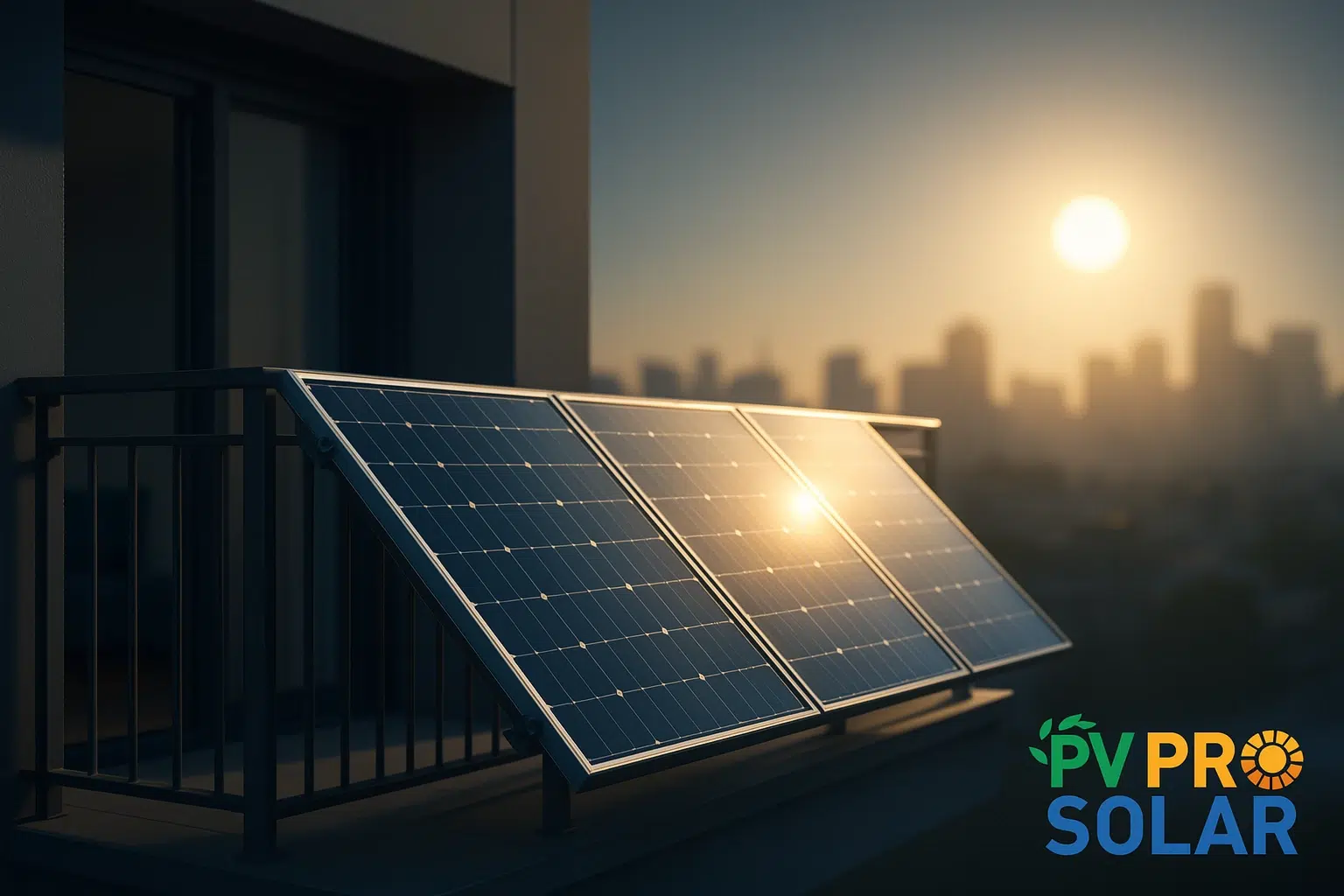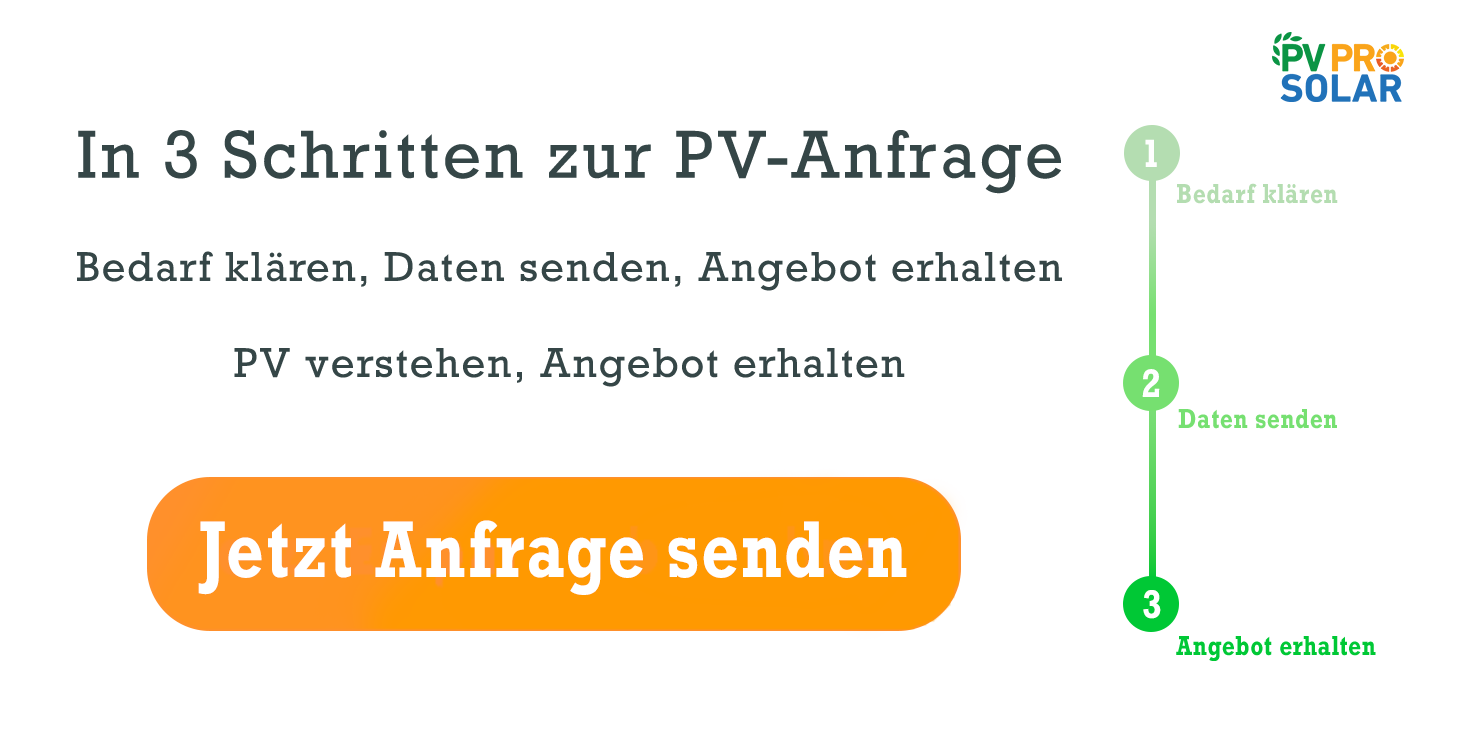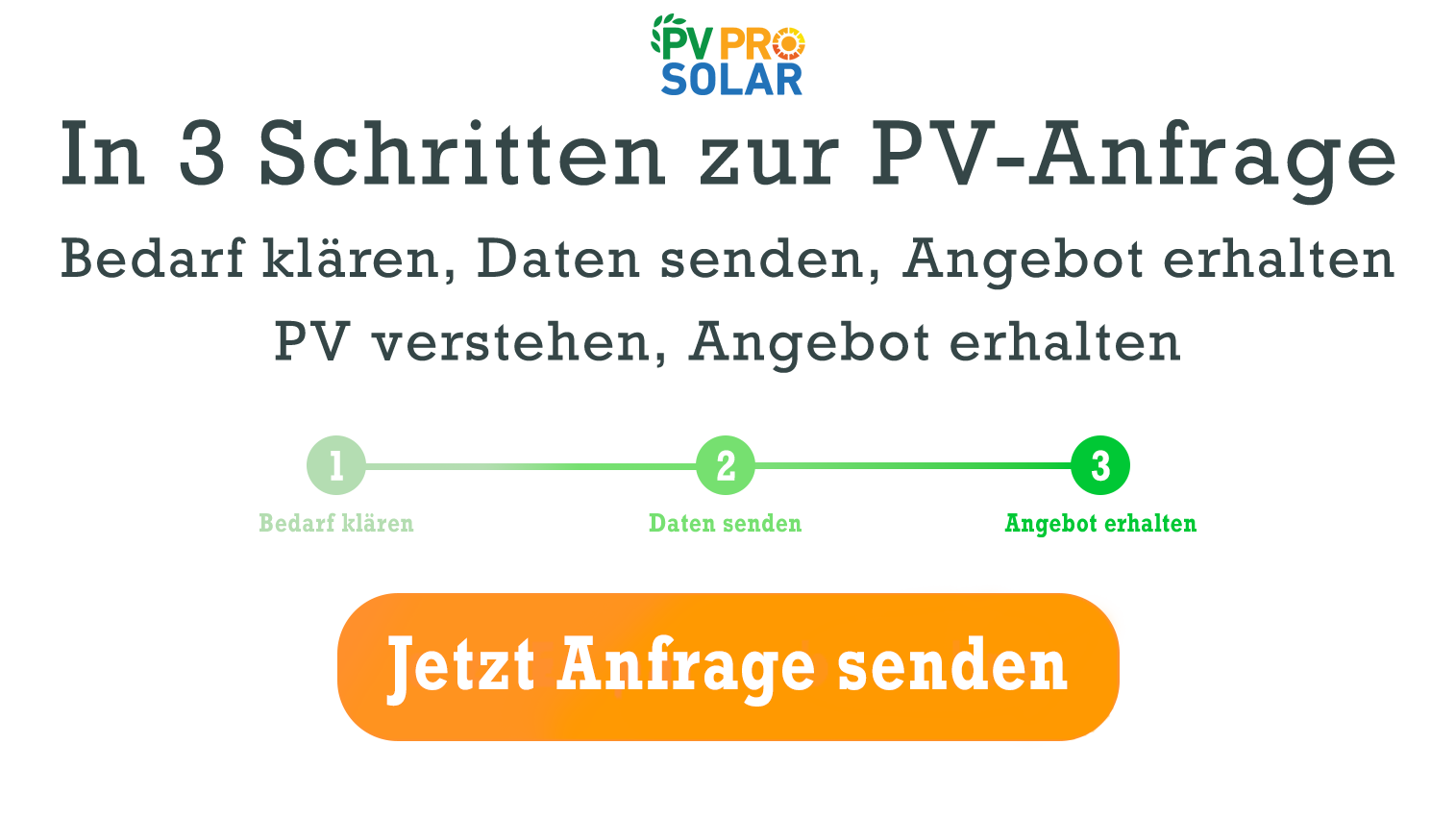Balcony Photovoltaic System: Is a mini system worth it?
The balcony photovoltaic system is becoming increasingly popular among homeowners and tenants alike. It provides an easy way to generate your own sustainable electricity and save money in the process. But how exactly do these compact systems function, what are their advantages, and is the investment worthwhile for your household? In this article, you will find all the key information regarding purchasing and operating a balcony photovoltaic system.
What is a balcony photovoltaic system?
A balcony photovoltaic system—also called a mini PV system or plug-in solar system—is a compact solution that allows households to generate their own solar electricity directly on their balcony. Typically, these systems consist of one or two solar panels (modules), a microinverter (small inverter), and a connector that directly feeds the generated electricity into your home electrical system, without the need for additional battery storage.
How does it work?
The photovoltaic panels installed on your balcony railing contain efficient solar cells that convert sunlight into electrical energy. The integrated microinverter ensures that the generated direct current (DC) is efficiently converted into grid-compatible alternating current (AC). This clean electricity then flows directly into your household network via a standard plug, immediately providing power to connected devices.
What are the benefits of a balcony photovoltaic system?
The key advantages of mini photovoltaic systems are their flexibility, ease of use, and green, environmentally-friendly power generation. They are affordable, require minimal space, and enable even tenants to start generating renewable energy, thus saving on electricity costs. Further benefits include:
- Quick and easy installation without specialized personnel
- Reduction in electricity expenses
- Minimal maintenance requirements
- Lower risks compared to larger solar installations
What requirements must be met for a balcony photovoltaic system?
Before purchasing a balcony photovoltaic module, you should verify whether your balcony receives adequate sunlight. Balconies facing south are ideal and typically provide the highest energy yield. However, east- or west-facing balconies can also be effective if they receive several hours of sunlight daily. Additionally, check if your landlord or building management requires approval before installation.
What legal regulations apply to balcony photovoltaic systems?
In Germany, balcony photovoltaic systems with an output of up to 600 watts can typically be operated without extensive approvals. However, there is a requirement to report your system to your electricity network operator and register it in the “Marktstammdatenregister” of Germany’s Federal Network Agency (Bundesnetzagentur).
How much electricity can a balcony photovoltaic system generate?
A typical balcony photovoltaic system rated at 600 watts can produce approximately 400 to 600 kWh of electricity per year. This covers a substantial portion of the electricity demand of one- to two-person homes, significantly reducing energy costs.
What are the costs of a balcony photovoltaic system?
The purchase price for a balcony photovoltaic system typically ranges between €500 and €1,200, depending on the power rating and quality of components. Additional costs may arise for mounts or installation materials. Usually, the investment pays for itself within just a few years due to the generated energy savings.
What maintenance does a balcony photovoltaic system require?
Balcony photovoltaic systems require minimal maintenance for lasting efficiency. Regularly inspecting the solar panels for dirt and, if needed, gently cleaning them with clear water will ensure optimal performance continues.
Are there subsidies available for balcony photovoltaic systems?
Certain cities and municipalities offer funding programs for installing balcony photovoltaic systems. Some German states also provide financial incentives or subsidies for purchases. It’s worthwhile to inquire about these potential options with your local municipality or energy provider.
How sustainable is a balcony photovoltaic system in reality?
Balcony photovoltaic systems significantly contribute to reducing CO₂ emissions. Utilizing renewable energy not only reduces your electricity bills but also positively impacts your personal environmental footprint.
In summary, an innovative balcony photovoltaic system consists of simple and complete sets, typically composed of solar panels, an inverter, and mounts, that can be easily attached and plugged into your existing electrical system. Unlike roof-mounted systems, these units are ideally sized for balconies, offering a straightforward and economical solution to rising energy costs. Balcony photovoltaic systems offer easy-to-use operation, helping you generate renewable energy and actively participate in climate protection. Evaluate your individual conditions, check for available subsidies, and start your personal energy transition on your balcony today.
Yes, tenants are generally permitted to operate balcony photovoltaic systems. However, you should first obtain approval from your landlord. Many landlords permit such installations since they can increase the property’s long-term value.
Excess electricity not immediately consumed usually flows back into the public grid without compensation. As these systems are designed primarily for self-consumption, users should ideally adjust their electricity usage to match generation times for maximum cost savings. Can I install a balcony photovoltaic system as a tenant?
What happens to surplus electricity?



